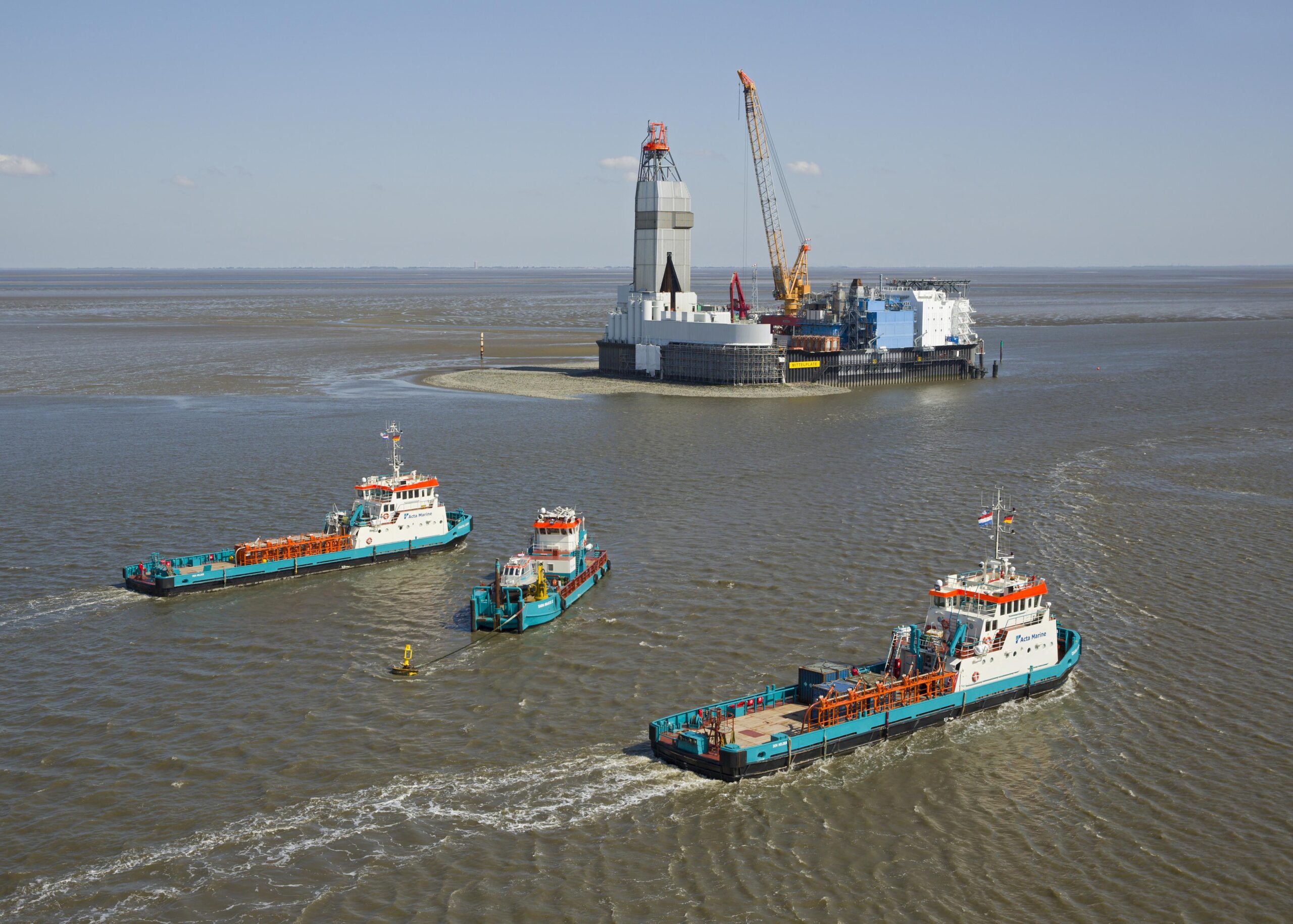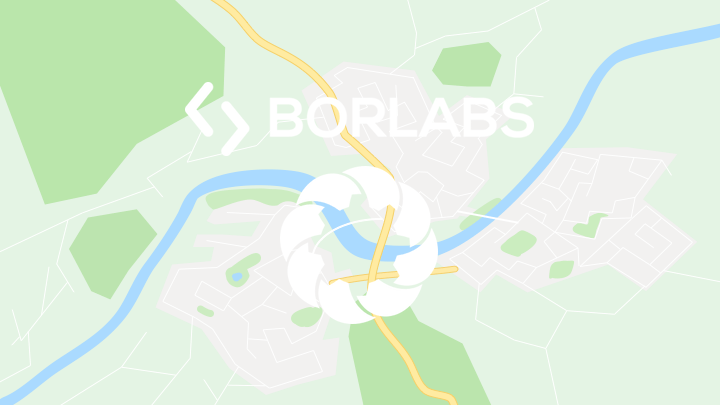PROJEKTE
 Quelle: Wintershall Dea
Quelle: Wintershall Dea
Die Bohrinsel Mittelplate mit Versorgerschiffen.
H2Move
Das Erdölfeld Mittelplate ist das förderstärkste Erdölfeld Deutschlands und wird seit 35 Jahren von Wintershall Dea betrieben. Das Feld befindet sich im schleswig-holsteinischen Wattenmeer, weshalb ein möglichst umweltschonender Betrieb vorgesehen ist. Im Projekt H2Move sollen die Versorgerschiffe der Bohr- und Förderinsel Mittelplate auf Wasserstoff-Hybrid-Antriebe umgestellt werden. Der hierfür nötige Wasserstoff soll CO2-neutral in Cuxhaven erzeugt werden.
News (15.11.2023): 2-Megawatt-Elektrolyseur erzeugt ab sofort grünen Wasserstoff für die Schifffahrt
Am 15. November wurde in Cuxhaven eine 2-Megawatt-Elektrolyseanlage in Betrieb genommen, die ab sofort grünen Wasserstoff für die Schifffahrt produziert. Der grüne Wasserstoff soll im Projekt H2Move zum Einsatz kommen, in dessen Rahmen Versorgerschiffe der Bohr- und Förderinsel Mittelplate auf Wasserstoffhybridantrieb umgerüstet werden. Bei der offiziellen Inbetriebnahme der Elektrolyseanlage sowie des ersten umgerüsteten Versorgungsschiffes Coastal Liberty nahmen u.a. Turneo-Geschäftsführer Jochen Kaufholt, Tobias Moldenhauer (EWE), Robert Frimpong (Wintershall Dea Deutschland), Cuxhavens Oberbürgermeister Uwe Santjer und Niedersachsens Wirtschaftsminister Olaf Lies teil. Mehr erfahren
News (14.09.2023): Elektrolyseanlage befindet sich in Montage/Inbetriebnahme!
Die 2 MW-Elektrolyseanlage wurde vor knapp einem Monat in Cuxhaven abgeliefert. Damit wird es möglich sein, nach der erfolgreichen Montage und Inbetriebnahme, eine Produktionskapazität von bis zu 860 kg H2/Tag zu erreichen. An der ebenfalls installierten Tankstelle wird der Wasserstoff in Flaschenbündeln abgefüllt und auf Schiffe transportiert, mithilfe einer Brennstoffzelle wird das Wattenmeer somit geschont.
In Cuxhaven wird aktuell eine Elektrolyseanlage mit einer Leistung von 2 Megawatt für die Erzeugung von grünem Wasserstoff errichtet. Dieser soll bei den Versorgerschiffen der Bohr- und Förderinsel Mittelplate zum Einsatz kommen. Um die Tankvorgänge möglichst schnell durchzuführen, werden in Cuxhaven zudem Speicher mit verschiedenen Druckstufen gebaut.
Nach Fertigstellung der Anlage ist vorgesehen, den in Cuxhaven erzeugten Wasserstoff in sogenannten Tankcontainern unter einem Druck von bis zu 350 bar auf die Mittelplate-Schiffe zu befördern. Aus den Containern wird der Wasserstoff dann einer Brennstoffzelle zugeführt, die Strom erzeugt und schließlich den Elektromotor der Mittelplate-Schiffe antreibt.
Die vier Versorgungsschiffe der Mittelplate-Flotte legen laut Angaben von Wintershall Dea jährlich zusammen etwa 12.500 Seemeilen zurück. Als erster Versorger wird das Schiff Coastal Liberty umgerüstet. Allein dieses Schiff verbraucht rund 275.000 Liter Diesel pro Jahr und hat ein Einsparpotenzial von jährlich bis zu 700 Tonnen CO2.
Die Entwicklung und Umsetzung der landseitigen Versorgungsinfrastruktur wird durch die Turneo GmbH umgesetzt, einem Joint Venture aus der Hamburger Karlsson GmbH und der EWE Gasspeicher GmbH aus Oldenburg. Die Firma EnTec Industrial Services GmbH hatte zuvor eine Machbarkeitsstudie in Cuxhaven erfolgreich abgeschlossen. Das Projekt soll letztlich auch den Grundstein für den Aufbau einer regionalen Wasserstoffinfrastruktur in Cuxhaven legen.
Mehr zu dem Projekt gibt es hier.
Über Wintershall Dea
Wintershall Dea sucht und fördert weltweit Öl und Erdgas. Seit mehr als 30 Jahren fördert das Unternehmen am Standort Mittelplate Erdöl. Zunehmend ist das Unternehmen jedoch auch in den Bereichen Wasserstoff und Carbon Capture and Storage (CCS) aktiv.
Logo © Wintershall Dea



